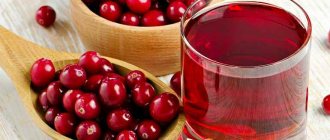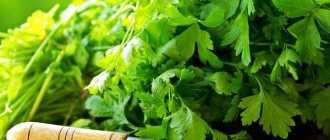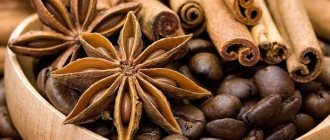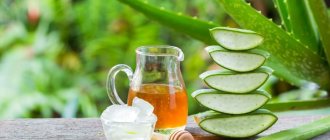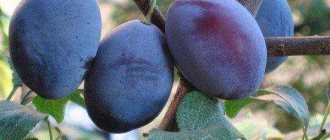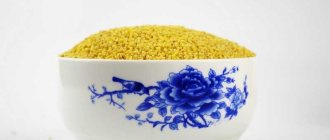Salo…
Some of us, at the mention or sight of lard, shudder with goosebumps running through our bodies, while others, on the contrary, lick their lips. You can either not tolerate him or love him, just don’t remain indifferent...
Lard is a controversial product that has a lot of pros and cons. In addition, there is no less a mass of myths and misconceptions about this rather high-calorie product: see: Is lard rehabilitated?
Doctors, nutritionists, and simply lovers of this delicious product ask questions about whether lard is good or bad for humans.
And if the latter sometimes doubt, then experts loudly declare - of course, it is beneficial! The only question is in what quantities to use it. Lard is animal fat deposited under the skin, near internal organs and in the omentum of the abdominal cavity. This product is obtained mainly from livestock, most often pigs, and is considered as a store of nutrients in the animal's body, consisting of large amounts of saturated fatty acids (triglycerides).
A little history...
Proto-Slavic form sadlo. The root sad- is the same as in the word “to sit down.” Suffix -dl-; d naturally dropped out in Old Russian, but is preserved in West Slavic languages (for example, Slovak sadlo). “That which sits on meat.”
Still, it is more correct to consider Italy as the birthplace of lard. It was there that three thousand years ago the idea of using pork fat as a cheap and high-calorie food for slaves who worked in marble quarries arose.
Lard has always been a food product for poor people, because the best pieces of pork carcass went to those who could pay for them or take them away. So the poor people learned to prepare lard for future use by salting, sometimes smoking, and further ripening. Almost every nation will claim that their lard is the best in the world. Russians and Ukrainians will be for their “fat”, Belarusians for their “fat”, Germans for “spek”, Balkan Slavs for “slanina”, Poles for “elephant”, Americans for “fatback”, etc. But if anyone has ever tried “Lardo di Colonnata” or “Valle dAosta Lardo dArnad”, they will hardly dare to dispute the superiority of the latter two.
Let's look back in time. The Romans called lard “lardo”, and now such a word exists, but it no longer means lard, but what is otherwise called lard. Emperor Justinian also legally obliged the supply of Lardo to the army so that the legionnaires had enough energy in campaigns and battles.
After about a thousand years, lard was also recognized in Spain. The Spaniards call lard jamon, which means ham or ham. Jamón has virtually no cholesterol, and this product is one of the most beloved by Spaniards.
People who lived in the Middle Ages ate huge amounts of lard. Even Saint Benedict, who was the founder of the Benedictine order, allowed the monks to eat lard, arguing that “the pig and lard are as closely related to each other as the vine and wine.” The interesting thing is that they didn’t just eat lard, they also made candles from it. Of course, the candles were inferior to ordinary ones in all respects, since they gave off an unpleasant smell, they smoked heavily, but they still provided light. Tallow candles made it possible for the monks to copy books, which undoubtedly made it possible to preserve and pass on to us, our descendants, the light of culture.
Pork lard is a traditional and very highly valued food product in Russia, Belarus and Ukraine (which is played out in many jokes, anecdotes and folklore stories), as well as in Poland, the Czech Republic, Slovakia, Hungary, and the Baltic states. At the same time, the religion of Jews and Muslims prohibits the use of pork and lard.
But what about the well-known English scrambled eggs and bacon? What is bacon? Salo! It's the same. The British are a healthy, sensible and learned people, and they take good care of their health. Having had such a healthy and pleasant breakfast, the British conquered the seas, developed capitalism, invented steam engines and discovered the theory of evolution.
So, taking into account all of the above, you can discard all the myths that lard is harmful to health, and even think about the fact that lard is a necessity and benefit for the human body.
Useful properties of lard
Today we can safely say that lard is a phenomenon, which, however, has its own scientific basis. Despite the fact that this food is 100% fat and contains a huge amount of cholesterol, when consumed in moderation, only benefits and not harm are found. This phenomenon can be explained quite simply - this product contains arachidonic acid (absent in vegetable oils), which is not found in its pure form. Arachidonic acid is an unsaturated (easily digestible) fat. The main feature of this acid is that it participates in the process of cholesterol metabolism - at the level of cellular and hormonal activity. And therefore the cholesterol in lard is correct: it is not deposited on the walls of blood vessels and does not cause any harm to the human body. Cholesterol, by the way, is by no means a foreign compound for our body, where it performs a lot of important functions: it is part of the intercellular membranes and tissues of the body, where it is either in a free state or in the form of fatty acid compounds, participates in the synthesis of blood components, etc. .d. The norm is considered to be from 150 to 240 mg per 100 cc. blood, to some extent this is a conditional indicator reflecting the intensity of the oxidation processes of fats and carbohydrates in the body as they enter and synthesize.
Lard also contains other essential fatty acids (vitamin F): linoleic, linolenic, palmitic, oleic, as well as fat-soluble vitamins A (up to 1.5 mg per 100 g), D, E and carotene. Moreover, in terms of the content of valuable fatty acids (up to 10 percent), lard is ahead of butter. That is why the biological activity of lard is five times higher than that of butter and beef fat. Animal fats contained in lard belong to the group of saturated fats (animal fats contain more than 50% saturated fatty acids). It is easy to distinguish saturated fats from unsaturated fats - at room temperature they are in a solid state. The human body is not able to interact with direct molecules of saturated fatty acids. If they are not immediately used by the body as fuel, they are stored in fat cells. Due to the high content of saturated fats, many nutritionists at one time advised against eating lard or reducing it to a minimum. It was also believed that excessive consumption of lard could cause atherosclerosis. However, recently the situation has changed in the most radical way: the benefits of lard are a scientifically proven fact: see: Eating Lard IS USEFUL!
Fatty acids are involved in the construction of body cells, and also play an important role in the formation of hormones and cholesterol metabolism, and help the functioning of the heart muscle.
It is lard that contains selenium . According to the Institute of Russian Academy of Medical Sciences, 80% of Russians are deficient in this substance. And for athletes, nursing mothers, pregnant women and smokers, this microelement is simply vital. By the way, garlic, which is often consumed along with lard, also contains a large amount of selenium. Lard does not spoil during long-term storage. On long hikes it has always been one of the main sources of physical strength for travelers.
Medicinal properties of lard
Few people think about the fact that lard is not only an excellent food product; but it can still be used for both cosmetic and medical purposes.
Lard is used in the treatment of many diseases. Due to its properties, lard is often used as a base for both external ointments and medicinal mixtures taken orally. As an independent product, lard is used as food for tuberculosis and physical exhaustion of the body. Lard as an additional component in well-known traditional medicine can significantly improve their healing properties.
Researchers of the therapeutic effect of lard on the human body recommend combining it with garlic to optimize the effect of lard on hypercholesterolemia. This is exactly the recipe for success. By carrying out regular prevention, anyone can improve their blood vessels, heart and liver . The liver, if you didn’t know, improves significantly if you include lard in your diet every day.
Another aspect of lard is its use in toxicology . The natural product turns out to be ideal for binding radionuclides and removing other toxins from the body. The main thing is regularity of use. Of course, eating lard is recommended as a preventative measure. There are so many waves, radiations and emissions around us that leaving the house and even just remaining unprotected in it has become an unaffordable luxury for a person. And we don’t care about nuclides with lard :o)
It is also known that lard is an excellent choleretic agent.
did not go unnoticed . Carcinogens dissolve in lard, and then, together with lard, are eliminated from the body, so lard plays a significant role in the treatment of cancer.
Everyone knows the love of the Ukrainian people for lard in combination with vodka, and few would dare call this nation sick or frail. And the whole point is in the interesting interaction of these two products: alcohol intensively breaks down saturated fat into carbohydrates and water, and they are an excellent energy substrate. And practically no harmful compounds are formed, so lard and alcohol are an ideal combination .
Lard is widely used in folk medicine and as an external remedy. It often turns out to be more effective than pharmaceutical ointments. Lard used to prepare medicinal mixtures and ointments must be heated in a water bath. The lard is placed in an enamel bowl, which is placed in a pan of slightly larger diameter filled with water and put on fire. As soon as the entire piece of lard has melted, remove the dishes from the heat. When boiling, lard can lose a number of its healing properties.
TREATMENT OF BONE DISEASES
Treatment with lard is recommended for arthralgia, arthritis, arthrosis of any etiology, as a means of rehabilitation after injuries and operations of the musculoskeletal system.
- For joint pain
At night, lubricate the joint with lard (melted lard), apply wax paper on top, wrap it in a woolen scarf and leave the compress on all night. Instead of lard, you can use old lard, minced through a meat grinder, to which add a little honey.
- If joint mobility is impaired after injury
Mix 100 g pork fat with 1 tbsp. spoon of table salt and rub into the joint area. Then apply a warming bandage
- For the treatment of radiculitis
You can use an ointment based on goose fat. To prepare the ointment, take 50 g of lard (or goose lard), 2 cups of cow's milk and 10 g of ground red pepper powder. Bring the milk to a boil, add goose lard and red pepper, stir and place in a cool place. When the lard hardens, rub the ointment (about 1 tablespoon) into the sore joints overnight. Rub the ointment thoroughly and for a long time, at least 10 minutes. Apply a warming bandage made of a soft cloth (preferably flannel) over the ointment, and place a warm woolen cloth on it.
In the morning, remove the bandage and remove the ointment with a cloth soaked in warm water.
For people suffering from heart disease, we recommend using no more than half a teaspoon of ointment with each rub. The fact is that this ointment significantly increases blood circulation in sore joints, and the patient may feel a strong heartbeat.
- For osteochondrosis
In people with osteochondrosis, the cartilage between the vertebrae becomes thinner, which as a result begins to put pressure on the nerves and vessels located between them. Patients with osteochondrosis experience sharp, sudden pain in the spine, shoulder blades, large joints of the arms and legs, as well as in the heart. Treatment of osteochondrosis should be carried out under the supervision of a medical specialist. To treat this disease, massage is used, which should be performed by a professional massage therapist. For anti-osteochondrosis massage, it is useful to use rendered lard, and also rub it into the spine area at night.
To prevent diseases of the spine, you can use rendered goose lard. Melt the lard, mix with vinegar in a 2:1 ratio and rub the resulting mixture into the spine area with massaging movements.
- For gout
This disease brings a lot of torment and suffering, and in order to get rid of it as soon as possible, prepare an ointment with the following composition: 1/2 cup of hot water, 30 g of lard, 20 g of ammonia, 50 g of turpentine, 100 g of camphor alcohol, 1/2 cup goat milk.
Melt the lard, pour milk and water into it and bring everything to a boil. Then add ammonia and camphor alcohol, turpentine and mix everything. Store the resulting ointment in the refrigerator.
Rub the ointment onto gout-affected areas every day before bed for a month.
TREATMENT OF COLD DISEASES
There is no person who has not suffered from a cold at least once in his life, accompanied by a painful cough, headache, fever, runny nose and other extremely unpleasant symptoms. You can help a person who has a cold by using traditional medicine, which widely uses lard.
- In the old days, for colds, they rubbed their feet and hands with warm lard
To reduce high temperatures, rub lard onto your feet, put on wool socks and leave for 2-3 hours. At very high temperatures, you can do this procedure at night.
- For the treatment of colds accompanied by cough,
Every day, preferably at night, rub your chest, throat and calves with a mixture of melted lard and fir oil. To prepare the mixture, melt 2 tablespoons of lard in a water bath, cool it a little and add 3-4 drops of fir oil.
- If you have a severe cough,
Before going to bed, perform the following procedure. Melt 50 g of lard (or goose fat), cool it a little and mix with two tablespoons of vodka. Rub the resulting mixture onto your chest, place a warming compress of gauze folded in several layers or a terry towel on top, and put on a warm shirt.
- To relieve severe coughing attacks
the patient should be given 1/2 teaspoon of rendered lard.
- For a cold accompanied by a runny nose and cough, drink tea with lard.
Pour 1 teaspoon of green leaf tea into a glass of boiling milk, let the drink brew for 4 minutes, then add a teaspoon of melted lard to the tea and, covering the dish with a lid, leave the tea for another 3-4 minutes. Then add a pinch of ground black pepper to your tea and immediately drink the entire cup. It is best to use this remedy to fight colds in the evening, before bed.
- For bronchitis
Most often, bronchitis occurs as a complication of acute respiratory diseases. Bronchitis is accompanied by fever, severe cough, which is often paroxysmal. As an expectorant, you can use a mixture of rendered lard and a decoction of marshmallow root. Pour half a tablespoon of crushed marshmallow root into 400 ml of water and boil in a water bath for 10 minutes. Then let the broth brew and strain it. Melt 30 g of lard in a water bath and mix it with a decoction of marshmallow root. Use this mixture three times a day, 1/2 tbsp. l.
- For a severe runny nose
Prick a small piece of lard onto a fork and heat it in a hot frying pan for a minute. Wrap the hot lard in gauze and apply it to your nose for a few minutes. Carry out the procedure at night.
- For sore throat
It is useful to eat lightly salted lard, sprinkled with lemon juice.
- For pneumonia
Pneumonia is an inflammation of the lung tissue, one of the most dangerous and difficult to tolerate respiratory diseases. A patient with pneumonia is prescribed a course of drug treatment, a diet rich in vitamins C and P, and calcium. These activities can be supplemented with traditional medicine.
1. The proposed decoction is used to treat acute pneumonia; it can be consumed both in the morning and in the evening, before bedtime. Pour a tablespoon of chopped raspberry leaves, mint, a few lemon peels into boiling water (300 ml) and simmer over low heat for about 1 minute. Strain the broth, then add 70 g of melted lard. Cool slightly. This mixture should be consumed warm, 1 teaspoon per dose.
2. When treating both acute and chronic pneumonia, use a highly effective remedy with the following composition: 1 tbsp. l. interior pork fat, 1 tbsp. l. butter (fresh), 1 tbsp. l. sugar, 1 tbsp. l. honey, 1 tbsp. l. cocoa. Interior lard needs to be heated in a water bath. Lard melted in this way becomes tender and retains all its healing properties. Mix all of the above ingredients, place in a glass container and store in the refrigerator.
You need to use this remedy like this: boil a glass of milk, add a tablespoon of the mixture to the milk and drink warm every day, morning and evening.
- For “shooting”, sharp pain in the ear caused by a cold
Melt a small amount of lard in a water bath, cool it slightly, and dip a piece of cotton wool into it. Place a cotton ball in the outer ear canal and cover the affected ear with a warm scarf. When using this remedy, do not under any circumstances try to place a cotton ball deep into the ear canal - this can cause irreparable harm to your body.
- For the prevention of acute respiratory infections
Acute respiratory diseases most often occur in autumn and spring, so people prone to acute respiratory infections need to be especially careful about their health at this time. One of the effective preventive measures for acute respiratory infections is the daily consumption of a drink containing a decoction of rose hips and rendered lard. Pour a tablespoon of rose hips into a thermos, pour 300 ml of boiling water and let it brew for 1 hour. Then pour the infusion into a cup, add 1 tablespoon of melted lard, half a spoon of honey and drink the drink hot.
- Patients with tuberculosis
It is recommended to eat lard. Every day you can take 1 tablespoon of the mixture, which is prepared as follows: melt 70 g of pork or lamb lard, mix with two tablespoons of honey and 1/3 cup of strained linden blossom infusion.
TREATMENT OF SKIN DISEASES
For dermatitis caused by mechanical damage , a thin slice of fresh lard can be applied to the affected skin.
Skin diseases are often accompanied by itching, redness of the skin, and pain. You can reduce discomfort and relieve inflammation with goose lard and raw potatoes. Melt a tablespoon of lard in a water bath. Peel two medium-sized potatoes, grate them and squeeze the juice out of the potato mixture. Mix melted lard with juice and lubricate the inflamed skin with the resulting ointment. After 2 hours, carefully rinse off the ointment with cool water and, if the inflammation and pain have not gone away, apply the ointment to the skin again and leave for 1.5–2 hours. Apply a bandage over the ointment. The ointment should be stored in the refrigerator.
It is also known that external use of lard helps
- For burns
Exposure to high temperatures can cause serious harm to human health. It is well known that burns resulting from exposure to high temperatures come in four degrees.
For a first-degree burn, characterized by redness, peeling of the skin, and swelling at the burn site, you can also use lard. As first aid, apply a piece of lard that was previously in the refrigerator to the damaged area of skin. Salted lard is not suitable for these purposes.
For a second-degree burn, in which blisters appear on the affected area of the skin, after first aid, you can use an ointment made from sea buckthorn oil and lard. Melt 50 g of lard, add 100 g of sea buckthorn oil, stir and, when the mixture has cooled, apply it to the burn area and apply a sterile bandage.
For third and fourth degree burns, the victim needs immediate medical attention.
- For sunburn
The sun's rays have a beneficial effect on the skin if you sunbathe in moderation and follow simple precautions: use sunscreen, sunbathe early in the morning or in the late afternoon, when the sun's rays are less active.
But often even the most careful and prudent tanning fans forget about time while basking in the gentle rays of the sun, and as a result receive serious burns.
If, after returning from the beach, you notice that your skin is red and there is a slight burning sensation, lubricate the affected areas of the skin with a piece of unsalted cold lard.
Salo can be applied to the skin before sunbathing - this will help protect the skin from sunburn.
- For frostbite
Not only high but also low temperatures pose a great danger to human health. When exposed to low temperatures (below -15 degrees), frostbite of the skin often occurs. Frostbite comes in four degrees. With first-degree frostbite, pain and burning sensations occur, and the affected areas of the skin turn red. In the second degree of frostbite, the pain in the affected area intensifies and blisters appear on the skin. With subsequent degrees of frostbite, loss of sensitivity in the affected areas and even tissue necrosis develop.
In severe frosts, to prevent frostbite, the skin should be lubricated with lard or goose fat. Even if you go outside in warm clothes, take care of those parts of your body that are not protected by it - this is, first of all, your face and hands.
If frostbite still cannot be avoided, rub the affected areas until they turn red. In order to warm areas of the body affected by low temperatures, you can take a hot bath or shower. After you have taken a bath or rubbed the frostbitten areas of the skin until red, lubricate them with lard and apply an insulating bandage on top using a bandage and cotton wool.
For 2–3 weeks (depending on the degree of skin damage), rub the frostbitten areas with lard every day for 10 minutes.
- During chills
Rubbing with lard helps not only with frostbite, but also with chills. Fever occurs as a result of exposure to low temperature, high humidity, wind and is characterized by a general decrease in the tone of the body; reddish spots and small swellings appear on the limbs and, less often, the face.
A person suffering from chills needs a diet rich in vitamins, as well as hardening of the body. To improve their general physical condition, such people are recommended to rub their feet and hands with pork or goose lard every day for a month. You can do this procedure at night.
- For mastitis (apply not fresh, but old lard to the site of inflammation)
- For eczema
twice a day, lubricate the skin with ointment made from goose fat, a decoction of medicinal herbs: chamomile flowers, calendula, coltsfoot leaves and honey. Brew a tablespoon of herbal mixture with 1/3 tbsp. boiling water and let it brew for about 5 minutes. Then strain the broth, mix with melted lard and two tablespoons of honey. Rub the ointment in the morning and evening for three days, and then take a break for 1 day and repeat the three-day course of procedures again.
- Effective treatment with lard and weeping eczema
2 tbsp. Mix tablespoons of melted unsalted lard with 2 chicken egg whites, 100 g of dry crushed nightshade leaves and 1 liter. celandine juice. Leave for 2-3 days, and then lubricate the sore spots.
- Fungus on the skin of the face
try to treat it with an ointment made from rendered lard and activated carbon crushed into powder. Apply ointment to the spot on your face at night. You can also use onion or garlic juice.
- Getting rid of wen
A fatty tissue is a formation or cyst, also called a lipoma, which contains the secretion of the sebaceous glands. This disease can occur in different parts of the body, but there are places that are more susceptible to the appearance of wen than others, these include the face, torso, scalp, and hands. The lipoma or wen does not manifest itself in any way, it is painless. Usually it is simply a cosmetic defect of the skin.
Take a piece of lard and grind it into a meat grinder. To prepare this recipe you only need one tablespoon of lard. Pass the peeled garlic through a garlic press and take a teaspoon of the pulp. It must be mixed with lard. The resulting folk remedy is used as an ointment for wen.
- In the treatment of difficult-to-heal wounds
Take equal parts lard (unsalted), beeswax and spruce resin, boil the mixture over low heat in an enamel bowl, stirring, for 5-10 minutes. Pour the resulting hot ointment into a glass jar and cool. Lubricate the sore spot 2-3 times a day.
- For disinfection of wounds
In Russia, lard has long been used to disinfect wounds and cuts. A candle was made from tallow by melting it and inserting a wick of thick, harsh thread into it. When treating cuts, such a candle was lit and the wound was held over the fire. It was believed that a wound treated in this way would not fester and would heal faster. Of course, in modern conditions, this method of disinfecting wounds seems barbaric - in addition to a very weak disinfecting effect, treating a wound over a burning tallow candle can lead to a burn.
Currently, it can be recommended to use lard to protect wounds from infection. If you must perform any work during which an infection may enter an unhealed wound, and you do not have the opportunity to protect the wound in any other way (for example, by wearing gloves), generously lubricate it with unsalted lard. You can lightly lubricate your hands with lard before work involving contact with chemical household powders and solutions, for example, when washing clothes, washing dishes, or cleaning an apartment.
- Using lard, you can get rid of old calluses on your feet.
Immerse your feet in hot water for 10-15 minutes, add foaming shampoo or liquid soap and baking soda. After a soap and soda bath, apply a paste of crushed garlic mixed with lard to the calluses (all components must be taken in equal proportions). After 20–25 minutes, rinse the lard and garlic mixture with water and gently rub the callus with a fine-grained pumice stone.
- Lard is also used in the treatment of spurs on the heels (see heel spur
)
Mix 100 g of unsalted lard, 100 g of vinegar essence and 1 raw egg. Place the dishes in a dark place until the mixture is completely dissolved, stirring occasionally. Before the treatment procedure, steam the heel in hot water, then apply a cotton swab soaked in ointment to the sore spot, and put a sock on top. Apply the ointment at night, and in the morning, rinse off any remaining ointment with warm water. Duration of treatment - 5 days.
- With the help of lard you can cope with cracked heels
Steam the leg in hot water, remove the stratum corneum with pumice and apply slices of old lard, free of salt. Repeat the procedure daily
- You can try to cure varicose veins
1. Apply thin slices of unsalted lard to the sore spots and secure them with a bandage.
Repeat the procedure daily for at least a week. 2. 1 tbsp. Grind a spoonful of unsalted lard with 1 tbsp. spoon of hop cone powder and lubricate sore spots.
- Poor circulation in the body
can lead to limb cramps and improper heat transfer. You can improve blood circulation with the help of a contrast shower, gymnastics, therapeutic baths and massage. When performing a massage, it is recommended to use melted pork or goose fat to improve blood circulation. Apply a small amount of lard evenly to the entire surface of the skin of the area of the body in which blood circulation is impaired, and massage with light, circular movements for several minutes.
- For hemorrhoids
Crush old lard with a small amount of onions and inject the mixture into the rectum. Do the procedure regularly at night until the condition improves. First aid for inflamed hemorrhoids, see also Hemorrhoids are not a reason to suffer in silence...
- Salo will help get rid of warts
Mix 2 parts of rendered lard with 1 part of crushed garlic, apply to the wart and secure with a bandage. Change the mixture once a day.
- Surprisingly, lard perfectly relieves toothache .
Apply a small slice of lard without skin, free of salt, to the sore tooth between the gum and cheek for 15-20 minutes.
- For inflammation of the mucous membrane of the mouth and gums
Melt one tablespoon of lard in a water bath. Brew a teaspoon of crushed calamus rhizome with 150 ml of boiling water, cover with a lid and let it brew for about half an hour. Mix melted lard with calamus infusion and rinse your mouth with the resulting mixture several times. Each rinse should be long, about 2 minutes.
If your gums are inflamed, apply a piece of fresh lard to it for 15–20 minutes.
- Normalize metabolism and restore lost strength to an exhausted body
You can use lard. A person who has suffered a dangerous disease or has lost weight for other reasons should eat a mixture of lard, honey and butter. tablespoon
Melt lard in a water bath, mix with two tablespoons of honey and a tablespoon of butter. Pour the cooled mixture into a bottle and store in the refrigerator.
This mixture should be consumed as follows: boil a glass of milk, add half a tablespoon of a mixture of lard, honey and butter, stir thoroughly and take twice a day - morning and evening.
However, during the recovery period, for some diseases, lard is contraindicated, therefore, before you start consuming lard, you should consult your doctor.
By the way, this product is also used in cosmetology . Its beneficial properties provide rejuvenation and healthy skin. This is a natural cosmetic product that effectively supplies the entire spectrum of beneficial substances to the subcutaneous layers. Many women who love an even and beautiful tan use pork fat instead of a protective cream. This product helps your tan go on evenly without causing sunburn.
If you eat a few pieces of lard, you will feel full very quickly, which will prevent you from eating a lot and passing on, which in turn will allow you to maintain your figure.
It is not advisable to eat lard on an empty stomach, as this creates excessive stress on the pancreas. It is better to eat something light before lard - for example, a salad.
Yes, it's animal fat. And our people immediately associate the word “fat” with being overweight or, God forbid, obesity. So: lard, if it is freshly salted (not boiled or fried) , with moderate consumption will never lead to weight gain! Even with the most passive lifestyle, you can consume up to 30 grams per day without fear of gaining weight. If the person is active, then 100 grams per day will not harm you.
But - attention - this only applies to salted products, and not to bacon, smoked brisket or fried cracklings! It’s another matter if a person is already overweight. For him, the question of whether fat makes you fat is truly relevant. The consumption rate for such people is no more than 10 grams per day.
Interestingly, this product never contains helminths!
Treatment with lard is used for various ailments
Joint pain
At night, lubricate the sore joints with melted lard, after which you need to cover them with compress paper, then wrap them in a warm cloth. To make the lard melt better, first grind it into a meat grinder or grind it.
Mastitis
A piece of old lard applied to the breast will help stop inflammation.
Joint injuries
Add 1 tbsp to 100 grams of melted lard. spoon of salt. The resulting composition should be rubbed into the sore spot, then apply paper for compresses and insulate with a cloth. It's better to do this before bed.
Toothache
Place a small piece of fat, peeled from the skin, between the tooth that is bothering you and the gum. The pain should go away in a maximum of half an hour.
Heel spur
To 100 grams of lard (unsalted), add a chicken egg, 100 ml of vinegar essence and, stirring, leave for final softening of the lard. It is necessary to steam the sore heel and apply a cotton swab soaked in the resulting ointment to it, attaching it to the heel overnight. Rinse with warm water in the morning. After five procedures, the pain should go away.
Pork lard can be beneficial to health when consumed correctly, the main thing is to observe the measure. In addition, its benefits are obvious in treatment with non-traditional methods.
Video: Treatment with lard - original folk recipes
Source
Contraindications to the use of lard
For many diseases, eating lard is strictly contraindicated.
- First of all, it is better for patients with cardiovascular diseases . For example, a disease of this group, such as atherosclerosis , is characterized by the deposition of fats, especially cholesterol, on the inner lining of the arteries and the development of connective plaques, which can ultimately lead to the formation of blood clots. One of the reasons for this and many other cardiovascular diseases is a violation of cholesterol metabolism. Since lard is an excellent supplier of cholesterol, you should not put your health to a serious test and eat lard if you are prone to cardiovascular diseases, and especially if you already suffer from them.
- Lard is contraindicated for consumption by people suffering from diseases of the liver, stomach (gastritis, peptic ulcer) and respiratory organs (bronchitis, pneumonia). Such patients must adhere to a strict diet that excludes fatty foods.
- For people who have undergone a severe illness or surgery , the attending physician prescribes a diet based on a gradual increase in the calorie content of foods. First, such people eat light foods, mainly of plant origin, then, on the doctor’s recommendation, lean meat products are added to their diet, and only after the doctor’s permission can they begin to eat fatty foods of animal origin, including lard. Some people who have had a serious illness must follow a diet that eliminates or limits fat intake for the rest of their lives. based on materials from lib.rus.ec, appetissimo.ru, osale.org.ru
Medicinal properties of the products:
Lemon and its medicinal properties
Radish and its medicinal properties
Video: the benefits and harms of lard
Tallow is a white fatty tissue that covers the internal organs of a pig. The product has a loose consistency. Pork fat is effective in treating colds and more. Before using the component for medicinal purposes, it must be melted. To do this, the fat must be placed in a container and placed in the oven at moderate temperature. The procedure can also be carried out on a gas stove, heating over low heat. Then the pork fat should be drained into another container, separated from the remaining cracklings. The resulting product is called lard. In this form, it is stored much longer and is excellent for treatment.
